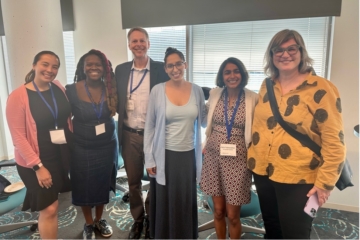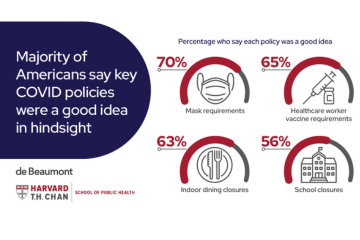
Credit: Senate Democrats via FlickR. Originally posted to: https://flickr.com/photos/32619231@N02/47858792102.
I was always amazed that most people of my parents’ generation could give a detailed description of the moment they heard President John F. Kennedy or Dr. Martin Luther King, Jr. were assassinated, down to what they were wearing or even eating. Since then, there have been numerous cultural and historic events that have similarly lodged themselves into our collective consciousness, and for me and many other millennials, the most recent addition is: “Where were you when Roe v. Wade was overturned?”
In a moment of uncertainty, there are a few things that we know the be true. First, the Dobbs v. Jackson Supreme Court ruling has in many ways codified into law the idea that where someone lives can determine their access to safe and high-quality abortion care. Second, even before Roe v. Wade was overturned, this was a reality for many low-income women and other birthing people of color, who are disproportionately affected by structural, economic, and geographic barriers. Finally, states with more restrictive abortion policies have higher total maternal mortality than states that are less restrictive and being forced to carry an unwanted pregnancy to term can lead to long-term negative mental, emotional, physical, and economic outcomes.
However, one thing we don’t yet know is how a post-Roe world will impact the work of public health professionals in their mission to protect the health of the public. To adapt to the new landscape, there are questions about how this ruling will impact the pipeline for the governmental public health workforce and the safe and equitable provision of reproductive health services and programs.
When considering where to live, work, and go to school, people typically weigh factors such as affordability, transportation access, and housing options (and if you’re a native New Yorker like me, proximity to a well-stocked Bodega). Now, add access to abortion care to that list. While many states have moved swiftly to pass legislation banning, severely restricting, or protecting the right to an abortion, the overturning of Roe v. Wade could have an impact on where people who can have children will choose to live or pursue their public health training – for those with the flexibility to make that choice. The 2021 Public Health Workforce Interests and Needs Survey found that 62% of governmental public health workers identify as women and are of reproductive age (15-49 years old). While this does not reflect everyone in the workforce who could give birth, it does show that the ruling could affect as much as two-thirds of the workforce as patients potentially seeking care.
As of 2020, the Guttmacher Institute considered 29 states to be hostile to abortion, most of which were in the Southern and Midwestern U.S. Incentivizing recent graduates and public health professionals to live or work in these areas may become increasingly difficult. According to the Brookings Institute’s Reproductive Health Rights Tracker, nine of the 13 states that enacted “trigger laws”—laws designed to take effect and immediately ban abortion after Roe v. Wade was overturned—ranked 30th or below in overall state health according to America’s Health Rankings. These are the areas where public health knowledge and expertise is most needed, and yet, many may hesitate to work there because of these bans and the legal precedent they may have created to criminalize other aspects of reproductive health care, such as experiencing an ectopic pregnancy or miscarriage and contraception access.
In addition to the potential legal ripple effects of overturning Roe v. Wade, public health practitioners have also begun to explore the possible implications for reproductive health programs at health departments. This includes increasing the capacity of health departments to serve pregnant people who may have been forced by an abortion ban to carry a pregnancy to term; preparing to support more people who have safely self-managed their abortions using abortion pills; sharing other legal routes to obtain an abortion; and continuing to provide evidenced-based, equitable, and culturally competent sexual health information. Health departments also have a critical role to play in data collection and surveillance efforts to measure the impact of abortion bans in their states and counties. Preliminary estimates show that abortion bans could increase pregnancy-related deaths among all women by 21% and among Black women by 33%. To create equitable solutions and improve health outcomes, it will be essential to ensure that the governmental public health workforce understands the impact of abortion bans on communities and is equipped to meet their changing needs.
Policy decisions have wide-ranging consequences on individual and population health, the economy, and the public health workforce, and are most effective when they are evidence-based. We already know the impact of policies related to sexual health education, HIV/AIDS and STI prevention, and contraceptive access, and in the coming months and years, will see firsthand the impact of the Dobbs v. Jackson ruling on the governmental public health workforce and the people they serve.




